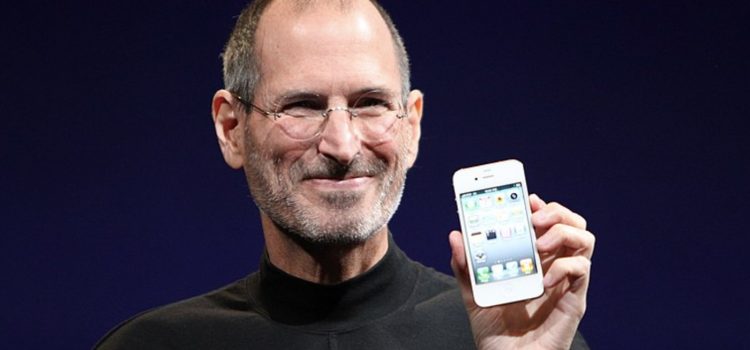

This article gives you a glimpse of what you can learn with Shortform. Shortform has the world’s best guides to 1000+ nonfiction books, plus other resources to help you accelerate your learning.
Want to learn faster and get smarter? Sign up for a free trial here .
Are you an aspiring entrepreneur? What can you learn from the most successful entrepreneurs in the world?
You’ll likely endure many challenges on your path of entrepreneurship. A true entrepreneur embraces these obstacles and works tirelessly to find solutions. If you ever feel defeated, just know that the most successful entrepreneurs overcame these same problems.
Below is the best advice from entrepreneurs that you’ll ever receive, from business magnate Warren Buffett to Apple co-founder Steve Jobs.
Peter Thiel: Build a Strong Team
Peter Thiel is a billionaire entrepreneur who co-founded PayPal and was one of the first outside investors in Facebook. With an estimated net worth of $7.19 billion, it’s undeniable that he’s one of the top entrepreneurs in the world. In 2014, he revealed the secret to success in the book Zero to One, co-written by himself and Blake Masters.
In the book, he asserts that the selection of your partners and employees is the most important decision you’ll make when starting a business. We’ll look at Thiel’s advice for building a strong team by carefully selecting the right partners and employees that will abide by your company’s culture.
Choosing Partners
Theil equates choosing a co-founder for your start-up company to choosing a marriage partner, claiming that the same issue of personal compatibility applies, and the consequences of incompatibility are just as severe. As an example, he recounts the tragic story of a company founded by Luke Nosek and an unnamed co-founder whose personality and ambitions were incompatible with Nosek’s. Thiel was an investor in the company, but he lost his investment when the company failed due to the founders’ incompatibility.
When bringing on partners and/or co-founders, Thiel claims that you need to consider how strong your corporate structure is—how founders, investors, and employees work and interact with each other. Some people advise against imposing structure on an organization, saying that this will stimulate creativity by giving your team members greater latitude to implement their own innovative ideas. Thiel concedes that in a perfect world, full of perfect people, that would be true, but argues that in the real world, real people need some amount of structure to work together constructively. If you partner with people who won’t abide by your company’s structure, then you shouldn’t work with them.
Recruiting Employees and Consultants
Employees are an essential part of your business, so you have to be careful about who you hire. As you build your startup’s talent pool, Thiel advises hiring only full-time, on-site employees. He acknowledges that part-time employees, remote employees, and consultants paid as contractors are cheaper to hire, and that startups must generally operate on a tight budget. However, in his experience, the less intimately people are connected to the company, the more they tend to focus on looking good in the short term, rather than building the company’s future. As such, even if you have to hire consultants to get the necessary talent, bring them on as salaried employees rather than contractors. And don’t even bother with part-time help or remote hires.
Creating a Culture
Thiel says your employees need to be unified by a zeal for your company’s unique mission. By way of illustration, he says there’s a fine line between a successful startup and a cult: Usually, cults are built on an idea or ideology that’s wrong, but that their members zealously support. Successful startups are built on an idea that’s true, and that their employees are zealous about, but that the rest of the world thinks is wrong, because the truth of the idea is not yet widely known.
Thus, as you hire additional employees, Thiel emphasizes the importance of articulating your company’s mission to them. He advises hiring people who find your company’s unique mission compelling, and want to work with the kind of people who are already on your team—not people who are just looking for money or special perks.
Advice to entrepreneurs: Hire people who want to see your company succeed in the long term. Create a healthy work culture that embodies your company’s mission.
Warren Buffett: Lead by Example
Billionaire investor Warren Buffett may not represent the traditional definition of an entrepreneur, but his work as a business magnate and the CEO of Berkshire Hathaway is a modeling example of what entrepreneurs should aspire to be. The Snowball by Alice Schroeder demonstrates how Buffett uses his success for good, and why you should too.
Entrepreneurship means being a model leader, which Buffett has proven to be through slow perseverance and integrity. In the field of high finance, Warren Buffett stands alone as a man not driven by appearances, ego, or the quest for the quick, easy dollar. Instead, Buffett embodies the old saying that “slow and steady wins the race.”
Eventually, his patience paid off and Buffett became one of the most influential investors in the world. Just as Buffett’s wealth grew throughout his life, so did his reputation. Buffett’s growing influence gave him a path to push for change through political activism and his role as a publisher, and (once people saw him as a titan of the Market) to advocate for equitable fiscal policies.
By the ’60s, Buffetts’ net worth had risen so high that his wife Susie suggested that he should shift his focus from making money and start giving back to the community. In particular, Susie was a civil rights proponent, while Buffett (like his father before him) was intent on preventing another World War. However, Schroeder argues that Buffett saw himself as an “idea man,” rather than an active philanthropist. Making money was his gift, and he intended to do so, earning as much as he could in his life before giving it all away at the end.
Nevertheless, Buffett and Susie both became active in politics and civil rights issues. While Susie worked heavily with the African American community, Buffett took personal steps against the antisemitism prevalent in Omaha’s elite. Despite his father’s staunch Republican leanings, Buffett became involved with the Democratic Party, actively supporting candidates in the 1972 election.
While not every entrepreneur is required to become an activist, philanthropy shows customers that you care about important issues that aren’t related to your company. When people see that you care, they’ll be more inclined to support your business.
Advice to entrepreneurs: Use your wealth and reputation to advocate for good causes that have nothing to do with your business. Be a figure that people look up to.
Jeff Bezos: Be Frugal and Break Away From Tradition
Amazon is the largest Internet retailer in the world, and it increasingly penetrates our everyday lives, from being the first stop for our online shopping to interfacing with our physical world through Echo and Alexa. It all couldn’t be done without Jeff Bezos’s management techniques based on his frugality and desire to break away from tradition. With the advice found in Brad Stone’s book The Everything Store, your business could become the next Amazon
Jeff Bezos’s Frugality
Jeff Bezos is famously frugal. Unlike technology companies that dote lavishly on their employees, Amazon is stingy. It believes that in the cutthroat low-margin world of retail, it needs to push for every possible advantage to reduce prices for customers.
As Bezos once said, “Frugality drives innovation, just like other constraints do. One of the only ways to get out of a tight box is to invent your way out.”
- Amazon’s first office was the garage of Bezos’s Seattle house, with desks made out of $60 doors from Home Depot. The door-desks are still a common office fixture and a symbol of frugality.
- Bezos made employees pay for parking and required all executives to fly in economy class. When flying on a private plane, he made a point of saying, “The company isn’t paying for this, I am.”
- His lieutenants carry this forward. Stone had dinner with a senior Amazon exec, who picked up the bill and tore up the receipt, saying “The company is not paying for this.”
- At their early office building’s coffee stand, Bezos made a show of getting his loyalty card punched and handing his free drink to a colleague.
- When a new hire joins the company, she gets a backpack with a power adapter and laptop dock. When she resigns, she’s asked to hand in all that equipment—including the backpack.
- Bezos drove a Honda Accord in the 2000s and reportedly continues to drive a Honda minivan. Reportedly he was often dropped off by his wife (before their divorce), who also personally delivered their four children to school.
If Bezos is content with managing Amazon with frugality, then you should be too.
Amazon Breaks Away From Tradition
Even among groundbreaking technology companies, Amazon is lauded for its continuous innovation and breakthrough ideas. Bezos’s advice for powering this is a constant push to rethink how things are done, never accepting the status quo without further questioning.
According to Amazon’s leadership principles, “Leaders expect and require innovation and invention from their teams and always find ways to simplify. They are externally aware, look for new ideas from everywhere, and are not limited by ‘not invented here.’ As we do new things, we accept that we may be misunderstood for long periods of time.”
- Bezos called Amazon the “unstore,” unbound by traditional retail rules. It had limitless shelf space; personalization for every customer; allowed negative reviews; placed used products right next to new ones.
- At some companies, strategic arguments are based on “doing things as we’ve always done them.” Not at Amazon – if the proposal doesn’t reason from first principles, it’s rejected. People who insist on the “traditional” style of thinking don’t last long.
- In 1997, Bezos wanted to conduct annual reviews of advertising agencies to make them compete for Amazon’s business. An Amazon marketing exec explained the industry didn’t work that way—he didn’t last long.
- In its relationship with suppliers, Amazon considered the minimum advertised price (MAP) to be a relic of old business. It violated this by hiding prices in the shopping cart and allowing third-party sellers to list lower prices, leading to a torturous relationship with Wusthof.
- As a company grows larger, it starts viewing its own internal practices as tradition. Bezos dubs this the “institutional no,” or internal resistance to unorthodox moves.
- He asks each director to share an example of the institutional no from her past.
- Longtime CIO Rick Dalzell: “He is bound only by the laws of physics. He can’t change those. Everything else he views as open to discussion.”
- Bezos: “Point of view is worth 80 IQ points.”
Advice to entrepreneurs: Take every step to save money to set the lowest prices possible for customers. Additionally, think outside the box and encourage innovative ideas from everyone in the company.
Steve Jobs: Deliver the Best Product Possible
Steve Jobs, co-founder and CEO of Apple, was a guiding force in the electronics industry, from the development of the first home computers in the 1970s to the world-shaking impact of smartphones and tablets. One of the lessons up-and-coming entrepreneurs can learn from Jobs is the value of quality over quantity. In other words: deliver the best product possible.
According to Walter Isaacson’s biography Steve Jobs, the entrepreneur’s motivation went beyond maximizing profits. Jobs was motivated to deliver the best product possible. He pursued this by focusing on Apple’s core essentials of craftsmanship, simplicity, and quality.
Jobs infused his passion for delivering great products into the development teams he brought together. He wanted everything his companies created to be more than useful; they had to be works of art. Isaacson recounts that Jobs directed his teams as if they were artists, whether they were working on operating systems, circuit boards, or apps for phones and tablets. As artists, he told them not to compromise, not to be afraid to break the rules if they had to (much like Bezos’s philosophy), and not to stop working until their projects were done.
Even if your start-up isn’t a technology company, it’s still worth treating your products as art and your employees as artists. It not only motivates them to create the best product in your field, but it gives your employees a greater purpose.
Advice to entrepreneurs: Stress quality over quantity. Consider your products like works of art and the employees as the artists.
Elon Musk: Set Ambitious Deadlines
Hailed as this one of this generation’s most innovative entrepreneurs, Elon Musk has built several industry-disrupting businesses, and he’s known for shooting for the moon—or more literally, Mars. One management method that helped Musk succeed throughout his entrepreneurial career is setting ambitious deadlines.
In all of his companies, Musk set deadlines for both himself and others. He told employees, consumers, and executives that certain tasks or products would be completed faster than anyone thought possible. In her book Elon Musk, technology journalist Ashlee Vance said she believes he wasn’t setting an arbitrary timeline—this was genuinely how long Musk believed it would take to complete certain tasks.
Employees soon understood that if Musk said something would take a day, it would actually take a few days or a week to do. They also learned to create daily—and sometimes hourly—schedules that included bathroom breaks. Employees understood the consequences of not meeting these deadlines.
Although setting these extreme deadlines put a lot of pressure on Musk and his employees, this habit is a large part of Musk’s success. Musk rarely met these deadlines, but by creating an extremely ambitious schedule, his teams achieved impressive results in a faster time frame than anyone else thought possible. For instance, NASA took about a decade to build a satellite; Musk’s original goal was to launch a rocket into space in a year and a half. Given NASA’s timeframe, Musk’s deadline seemed impossible. It took SpaceX six years to successfully launch the rocket. While SpaceX didn’t meet the original goal, completing the rocket in six years was still faster than anyone in the industry had predicted.
Advice to entrepreneurs: Set deadlines that push your employees to work harder and faster.
Sam Walton: Don’t Take Things So Seriously
Wal-Mart is the largest retailer on the planet. It exceeds $600 billion in sales—over 2x the size of Amazon—and runs about 10,500 stores worldwide.
This retail titan began in 1945 with founder Sam Walton managing a single store in Newport, Arkansas, a town of 7,000 people. In this small town, Walton learned the retail and management strategies that became the foundation of Wal-Mart’s staggering worldwide growth, which he shares in his book Sam Walton: Made in America. Many of these management strategies coincide with those of other entrepreneurs, such as building a team and being frugal, but one thing that set him apart was his encouragement to have fun.
Walton felt it was important to not take things so seriously. He didn’t want him or his employees to walk around scowling all day “pretending you’re lost in thought over weighty problems.” He preferred a “whistle while you work” philosophy. People should know that they’re supposed to have a good time working. This spirit was inherited from his small-town roots: a love of parades, cheers, songs, and celebration.
In the early days, this was a way to attract attention in small towns—the carefree spirit made Wal-Mart the best entertainment you could get in the area. The big shopping day for the family was Saturday, and stores needed to attract customers to their stores above others. Walton’s stores employed a host of promotions, such as:
- Hiring bands and circuses to perform in parking lots
- Moonlight Madness sales, with new bargains announced every few minutes
- Shopping cart bingo—Carts with numbers that, if chosen, got a discount
- Boxes of candy to customers who traveled the farthest
This love of fun spilled over into general management practices:
- Sam Walton bet the company in 1984 that if they made 8% in pretax profit, he’d do a hula on Wall St. They did, and he did a hula. He was embarrassed.
- They have a Wal-Mart cheer inspired by the U of Arkansas cheer.
Advice to entrepreneurs: Have fun. Show enthusiasm. Build spirit and excitement. Capture your team’s attention and keep them interested, making them guess what’s coming next.
Tony Hsieh: Provide Great Customer Service
Tony Hsieh was the former CEO of the online clothing retailer Zappos and was known for instituting a happy work culture at the company. Company culture was of the utmost importance at Zappos, but customer satisfaction was also at the top of Hsieh’s priorities.
Providing great customer service is a vital component of a successful business, according to Hsieh in his book Delivering Happiness. Great customer service is being so supportive and adaptable in every customer interaction that you have a positive emotional impact on the customer. This positive emotional impact is the first step toward forming a healthy and profitable long-term relationship with that customer.
Hsieh says providing good customer service is important because it increases the “lifetime value” of customers. This is the total revenue that a customer brings to the company throughout their life. If a customer only uses your service once, then their lifetime value is very low. However, if you create an emotional connection through your customer service, your customers are more likely to return to your business and increase their lifetime value.
How Zappos Encourages Great Customer Service
Zappos encourages great customer service through its intensive training program, Hsieh explains. Every Zappos employee goes through four weeks of customer service training and two weeks of working in the customer service call center. Most companies would view this as a waste of time and resources, but Zappos sees it as essential to the company’s success. If all employees are trained in customer service, they can all embody the principles of good customer service—such as attentiveness and politeness—in their interactions with customers, business partners, and the press.
Advice to entrepreneurs: Encourage exemplary customer service. Give every employee a chance to interact with a customer and maintain long-term relationships with customers.
Final Words
Not everyone’s journey of entrepreneurship is the same, but for most people, it’s a struggle to find the success they desire. That’s why it’s important to take advice from the people who are successful, so you can be the next leading entrepreneur to compete with.
What was your favorite piece of advice from entrepreneurs? Let us know in the comments below!

Want to fast-track your learning? With Shortform, you’ll gain insights you won't find anywhere else .
Here's what you’ll get when you sign up for Shortform :
- Complicated ideas explained in simple and concise ways
- Smart analysis that connects what you’re reading to other key concepts
- Writing with zero fluff because we know how important your time is






